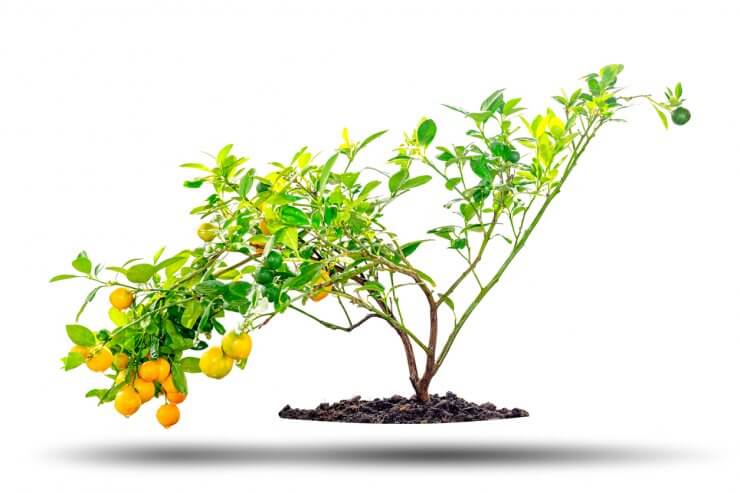
A beautiful small kumquat tree
There are only four main species of kumquats; they all grow in full sun and are prolific producers. Of the four species, three are good for eating. Some varieties will flower more than once a year, depending on where you grow them. Most are adaptable to container gardening, so while they grow best in zone 9 to 10, you can really grow them just about anywhere as long as they get full sun.
Nagami Kumquats (F. margarita) are an ancient Chinese species of kumquat; they’re also knows as oval kumquats. The Nagami was brought to the U.S. in the mid-1800s. The Nagami bears oval fruit with a thick, sweet, bright orange skin and tart pulp. Nagami kumquats usually have two to five seeds. This is the most commonly available kumquat in California and Florida, representing about 90% of the commercial kumquat market.
Marumi Kumquats (F. japonica), or round kumquats, produce small, round to slightly oval fruits. They have a thick rind and smooth skin that can range from orange to yellow-orange. This kumquat has prominent oil glands and one to six seeds. The pulp can vary from dry to fairly juicy. It’s grown commercially, but on a small scale. These trees will grow as tall as 12 feet if you grow them outdoors. Semi-dwarf trees will stay smaller—especially if you prune them.
Meiwa Kumquats (F. X crassifolia) were brought to Japan from China during the Meiwa period in the 18th century, and were imported to the U.S. in the early 1900s. They’re a hybrid of Nagami and Marumi. Meiwa kumquats are considered to be the best for eating fresh, and are the popular kumquat choice in Asia. The fruit of the Meiwa kumquat tree is larger than other kumquats, with a slightly oval to round shape. The rind is smooth, bright orange, and very thick and sweet; the pulp is not particularly juicy. Each fruit has two to five seeds. Meiwa kumquats are grown on a small scale in California and Florida.
Hong Kong Kumquats (F. hindsii), or Golden Bean Kumquats, are the only kumquat that still grow wild, in southern China. This is the oldest species of kumquat, and is usually grown as an ornamental plant rather than for its fruit—which is very small. The fruit is the size of a pea, with a bright red-orange rind and very bitter pulp. As small as the fruits are, they still have two to four seeds. They’re rare in the U.S., but common on the hillsides of China, where people flock to pick the fruits when they’re in season.
Check with your local garden center or extension center to help you determine which species is best suited for where and how you plan to grow your kumquat tree. You should note that there are limitations on where growers can ship kumquat trees because of USDA regulations designed to prevent the potential spread of disease. If you live in Arizona, California, Florida, Louisiana, or Texas, you’ll need to purchase your trees locally. Wherever you live, be sure to buy your trees only from reputable sources—don’t just pick up a tree from a roadside stand. That’s how citrus diseases can spread.
Have you tried growing a kumquat tree? Which kind you prefer? Please share your opinion in the comment section below.


 Previous
Previous

